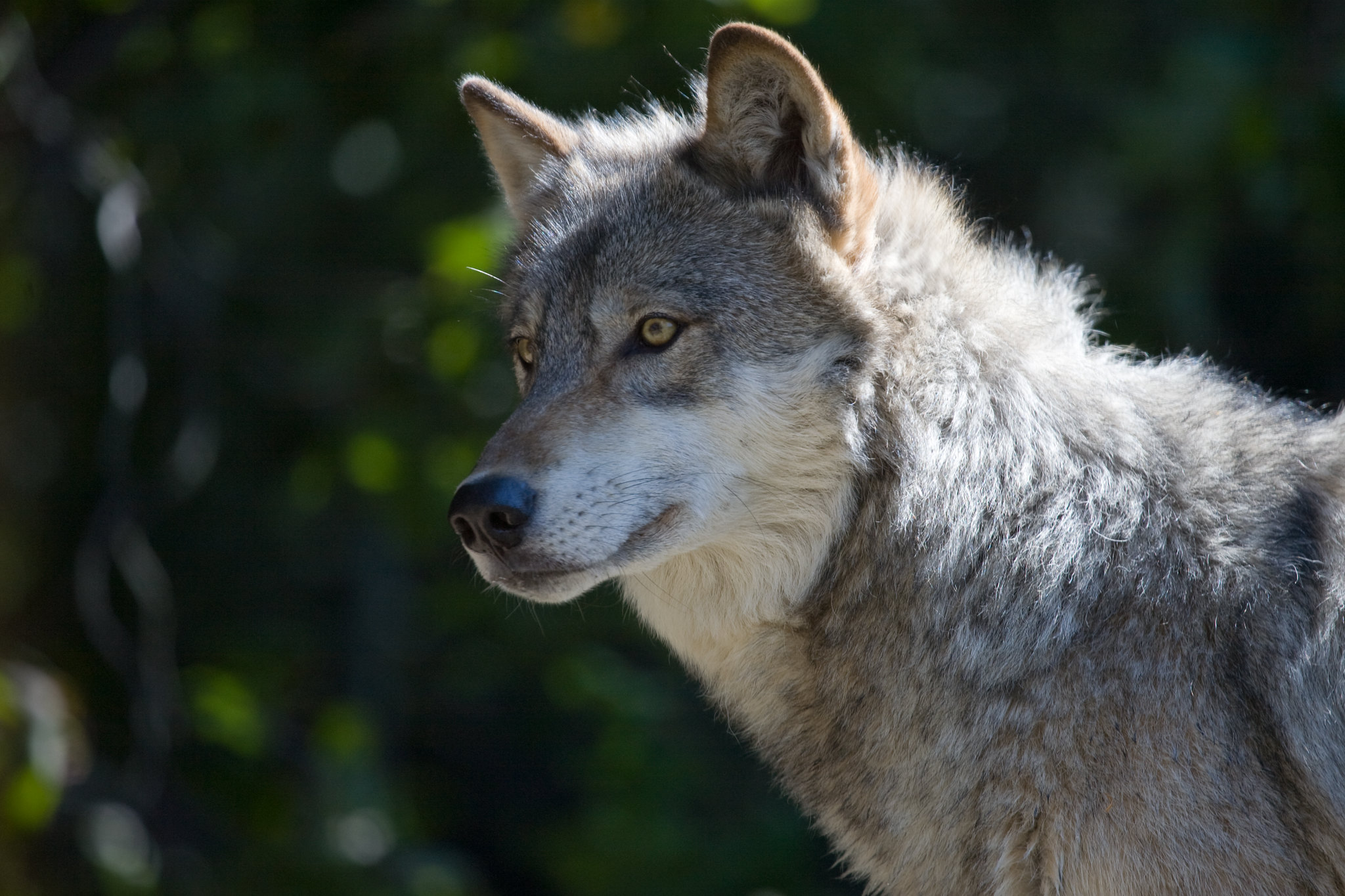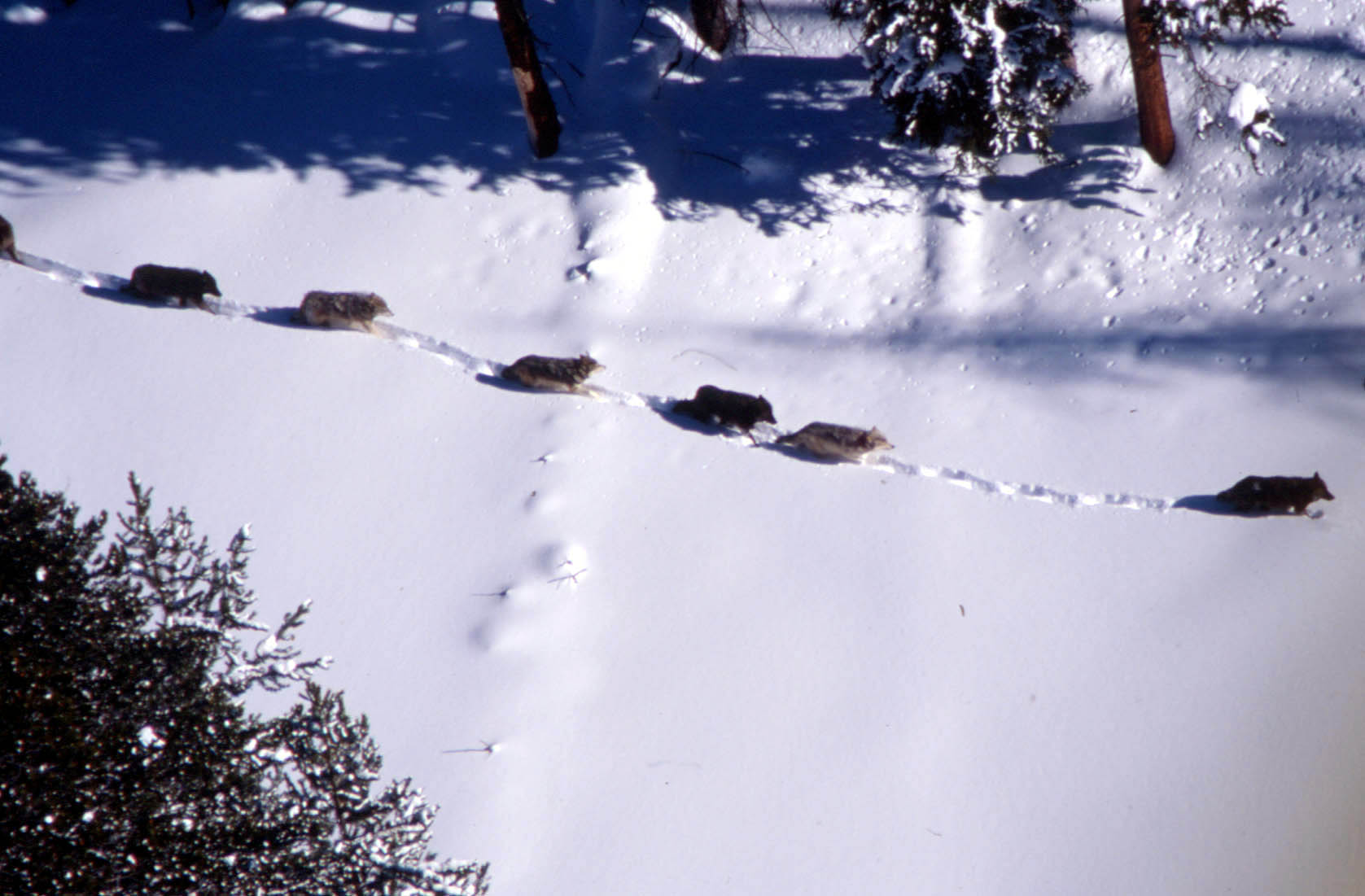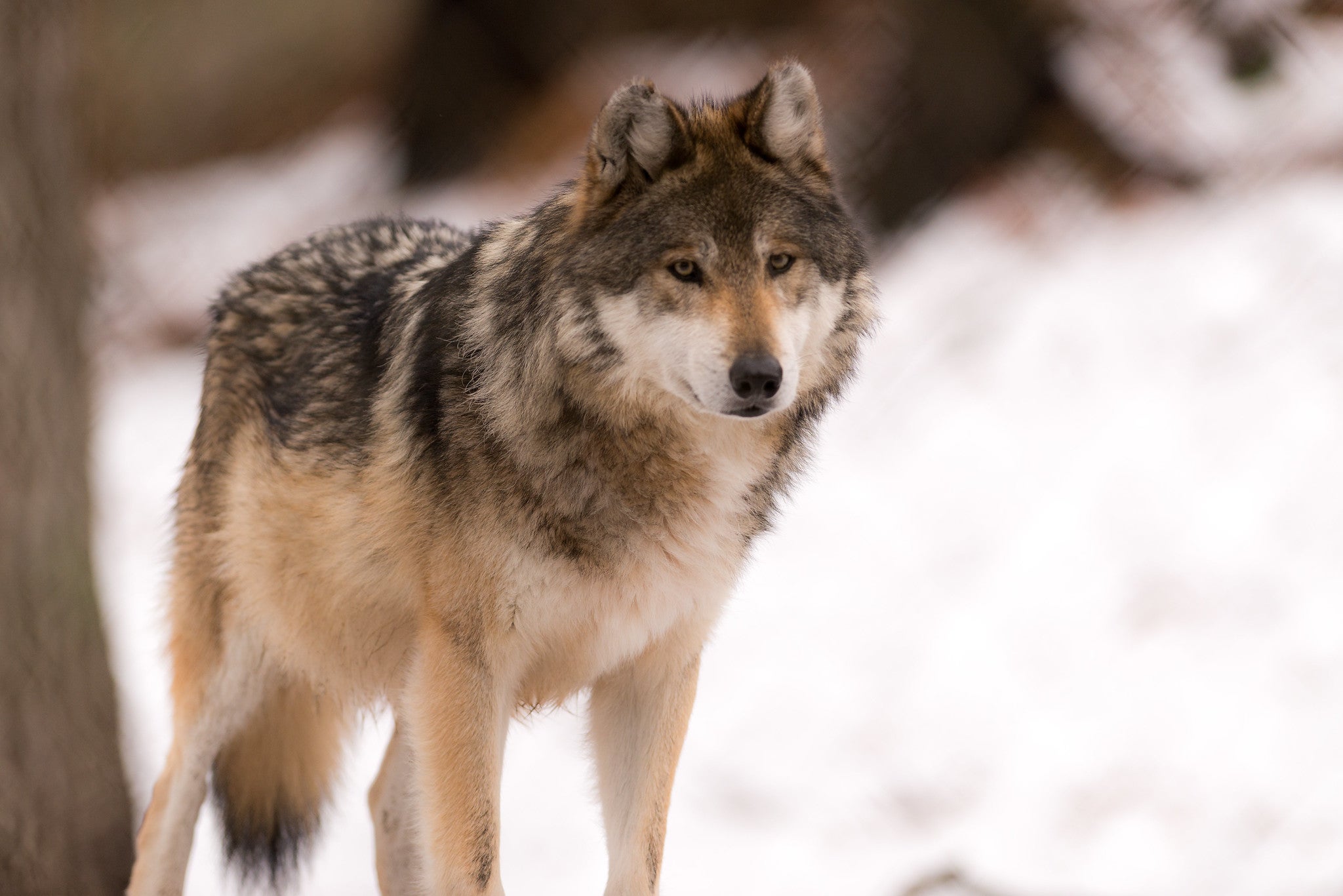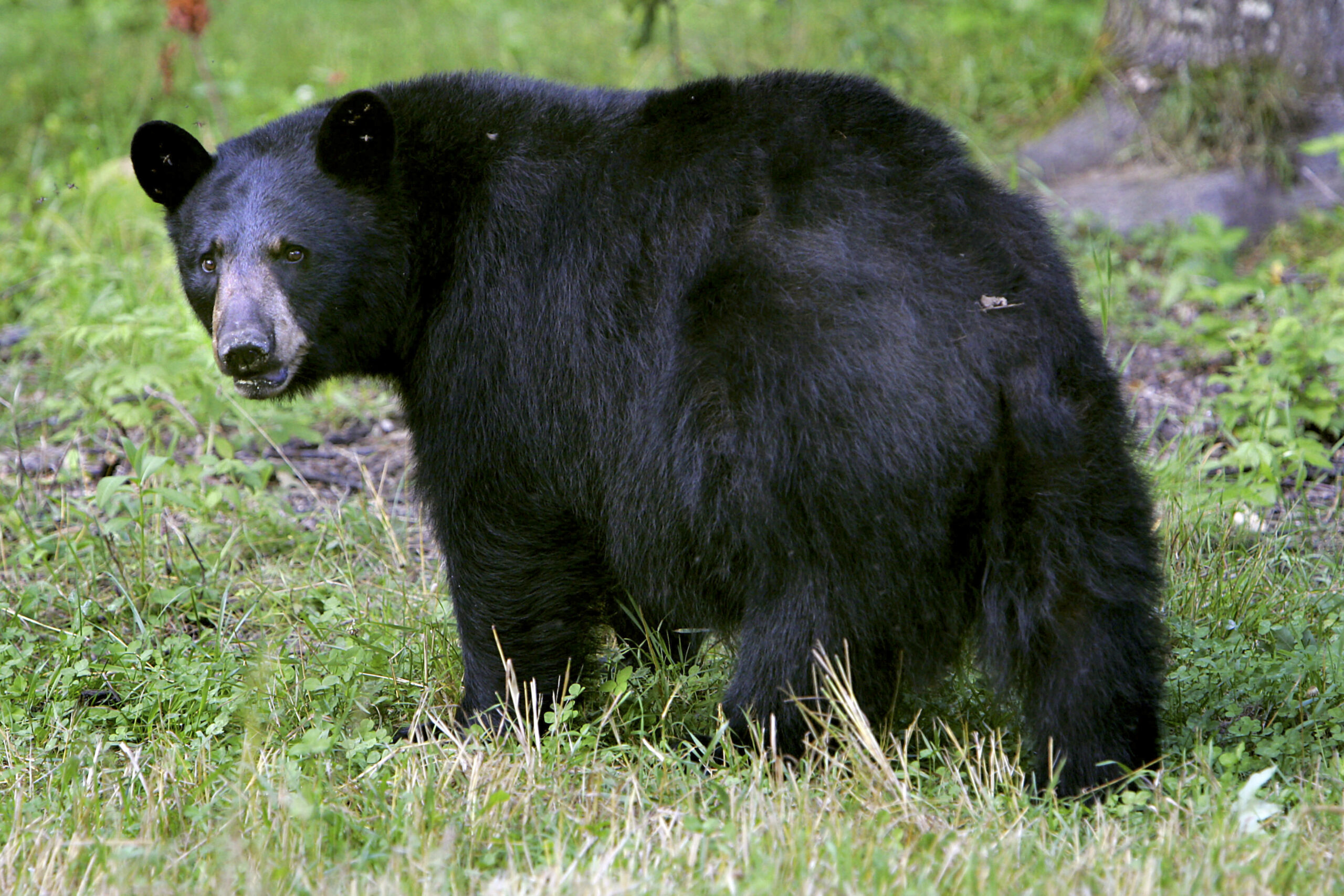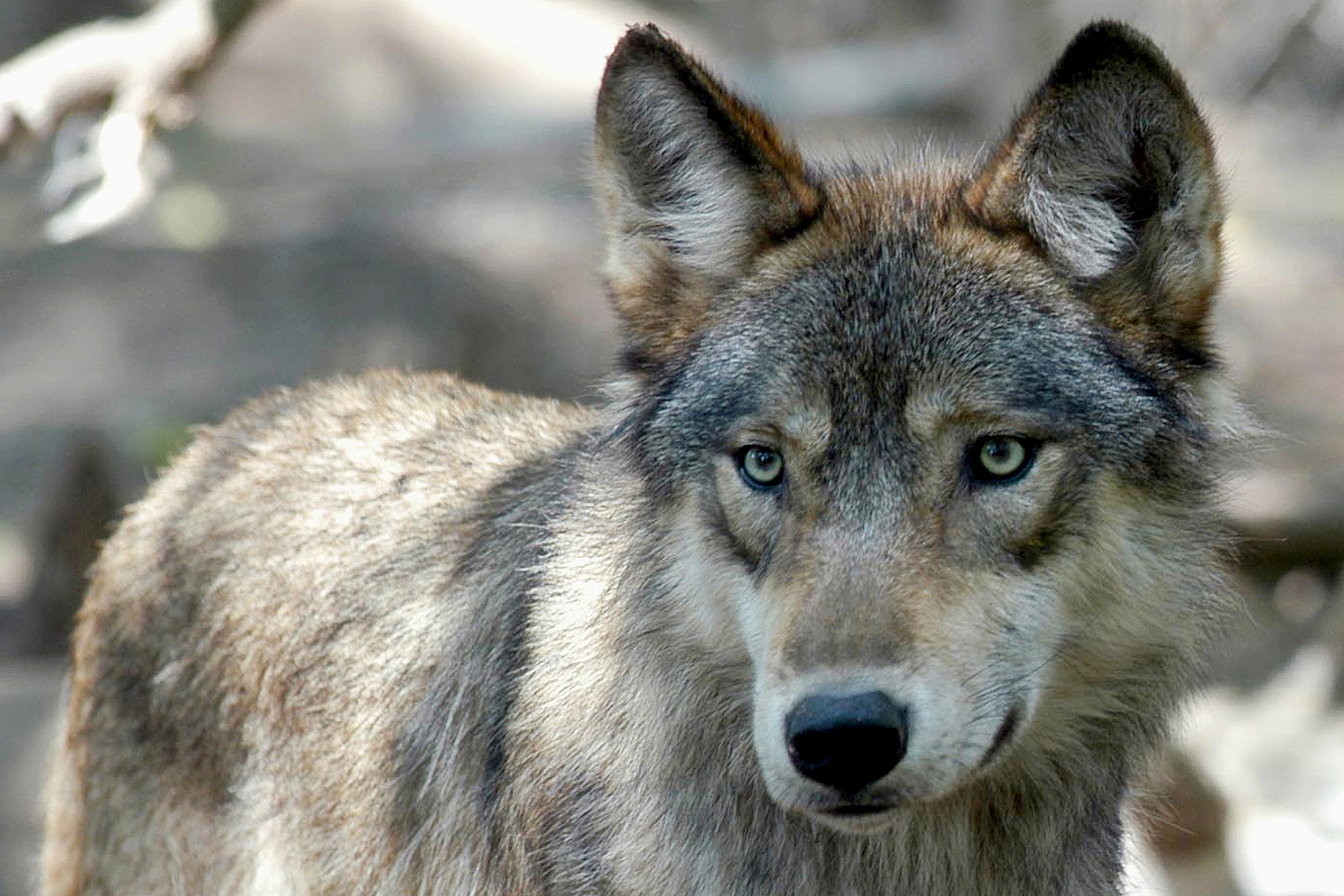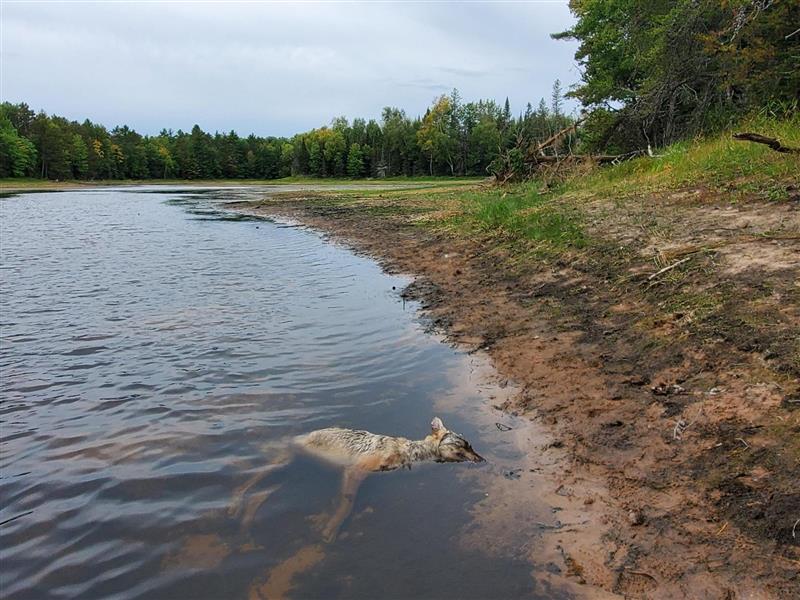Wisconsin first wolf hunt in six years did little to resolve wolf conflicts and may have harmed breeding among as many as 100 wolf packs, according to a report released by a conservation group on Wednesday.
The report released by Wisconsin’s Green Fire called the February wolf hunt, during which hunters blew past their quota and killed 218 wolves in less than 72 hours, a “prime example of what happens when wolf management is driven by politics instead of science.”
The group includes many scientists and biologists who formerly worked for the Wisconsin Department of Natural Resources, including Adrian Wydeven, co-chair of the wildlife work group for Wisconsin’s Green Fire. Wydeven led the DNR’s wolf program for 23 years.
Stay informed on the latest news
Sign up for WPR’s email newsletter.
“We’re estimating somewhere between 60 to 100 packs probably due to loss of breeding females and due to loss of adult males will lose their ability to have any pups this year,” said Wydeven.
That could mean 24 to 40 percent of reproduction may be lost among the state’s 245 wolf packs that exist beyond the boundaries of tribal lands in Wisconsin, according to the report.
Hunters harvested 38 adult females and 53 younger females, of which the group said anywhere from 50 to 65 percent may have been pregnant. That’s in line with estimates from the DNR’s large carnivore specialist Randy Johnson. He told WPR earlier this month that anywhere from 50 to 80 percent of the adult females harvested may have been pregnant in any given year.
The report also found that 73 percent of wolves were killed within core wolf habitat on public land during the February hunt, rather than areas where conflicts have occurred with livestock and pets on private land. Wydeven said the hunt did little to resolve those conflicts, adding that DNR data indicates wolf depredations of livestock are edging upward.
The number of wolves in Wisconsin grew from just 25 animals in 1980 to 1,195 wolves prior to the February wolf hunt, according to the DNR. As the wolf population has grown, farmers and hunters have reported increasing conflicts with wolves. Since 2017, the number of wolf depredation complaints has grown from 111 to 148 complaints in 2020. The number of verified attacks increased from 82 in 2019 to 98 confirmed depredations last year.
The Wisconsin DNR declined a request for an interview on the group’s findings.
“Wisconsin’s Green Fire is a valued partner that we work with on a myriad of topics. We appreciate their interest in this issue and welcome their suggestions,” said DNR spokesperson Sarah Hoye in an email.
The group is outlining a dozen recommendations they say will ensure wolf management is guided by science as the DNR updates its wolf management plan and prepares for the fall wolf hunt. They include a proposal to revise state law to restore authority to the DNR on when to hold a hunt.
“Mandating a harvest makes it impossible for our Department of Natural Resources to make a determination of whether a hunt is appropriate, and we don’t do that for any other species,” said Fred Clark, executive director of Wisconsin’s Green Fire.
A spokesperson for Senate Majority Leader Devin LeMahieu said they had no comment on the group’s report and proposal to revise state law. A representative for Assembly Speaker Robin Vos did not immediately respond to a request for comment Thursday.
While the group does not oppose a recreational wolf hunt, it recommends setting a conservative quota to maintain the population and taking steps to prevent hunters from going beyond established harvest levels.
Wisconsin’s Green Fire highlighted factors that “made it impossible” for the DNR to control the harvest during February’s wolf hunt. Those included a high ratio of 13 licenses sold for every wolf that could be taken by state licensed hunters and a constraint under state law that requires 24-hour notification before closing the season. During the state’s three prior wolf hunts, the most that hunters went beyond the quota was six wolves.
The group proposes reducing the number of licenses sold, issuing licenses for specific wolf zones, requiring registration of wolves harvested within 12 hours after harvest, eliminating night hunting of wolves and limiting the number of hound hunting licenses.
“A lot of the regulations on hunting dogs is part of the statutes that the department has kind of limited flexibility with making any alterations on, but we do encourage kind of tightening things up a little bit with the hunting dog regulations,” said Wydeven.
Wisconsin is the only state that allows hunting wolves with hounds. Unlike previous wolf hunts, the use of dogs was limited because state law doesn’t allow hunting wolves with dogs until after the gun deer season. A total of 86 percent, or 188 wolves, harvested were taken by dogs in the February hunt compared to 4 percent, or six wolves, in 2014. In 2013, hunters killed 14 percent, or 35 wolves, of the overall harvest with dogs.
The group also said the state needs to work to repair relations with Wisconsin Ojibwe tribes, highlighting the lack of consultation failed to meet requirements under the Voigt Decision. The federal court ruling affirmed tribe’s rights under treaties with the federal government and required coordinated management between the state and tribe on natural resources.
“We can’t simply take it as an afterthought that we’ll make important decisions about natural resources and species like a wolf and simply tell the tribes about it later,” said Clark. “That’s not what our obligation is, and that is going to damage our relations with our tribal partners.”
The DNR first proposed holding a wolf hunt this fall to allow more time for tribal consultation, public input and data collection. But, Kansas-based Hunter Nation sued the agency to force a season. A Jefferson County judge ordered a hunt to be held in February. The DNR appealed the ruling, but an appeals panel dismissed the case.
The Natural Resources Board set an overall quota of 200 wolves for the hunt that was split with state-licensed hunters, who allocated 119 wolves, while 81 wolves were set aside for Wisconsin’s Ojibwe tribes. Tribes have declined to harvest wolves because they view the animal as a relative.
State law requires a wolf hunt to be held in the fall through February when the wolf is not under federal protection. Prior seasons have started and ended earlier, and never went beyond December.
Former President Donald Trump’s administration delisted the wolf in January. President Joe Biden’s administration is reviewing that decision. Environmental and wildlife groups have also sued to restore protections for the animal.
Wisconsin’s Green Fire found that the mishandling of the February hunt has provided more incentive to wolf hunt opponents to seek immediate relisting of the wolf on the endangered species list.
The DNR is currently gathering public input as it revisits its 1999 wolf management plant that was last updated in 2007. The agency has also convened two committees that will provide recommendations on updating that plan and setting a harvest quota for this fall’s wolf hunt.
The wolf harvest advisory committee plans to develop and set a quota for the fall harvest at its next meeting in late May after reviewing the DNR’s population analysis, harvest report and public input.
The wolf management planning committee will hold a series of four meetings beginning in July. The agency hopes to have a draft available based on science and input from tribes and the public in February. A final plan will be submitted to the Natural Resources Board by June of next year.
Wisconsin Public Radio, © Copyright 2025, Board of Regents of the University of Wisconsin System and Wisconsin Educational Communications Board.
